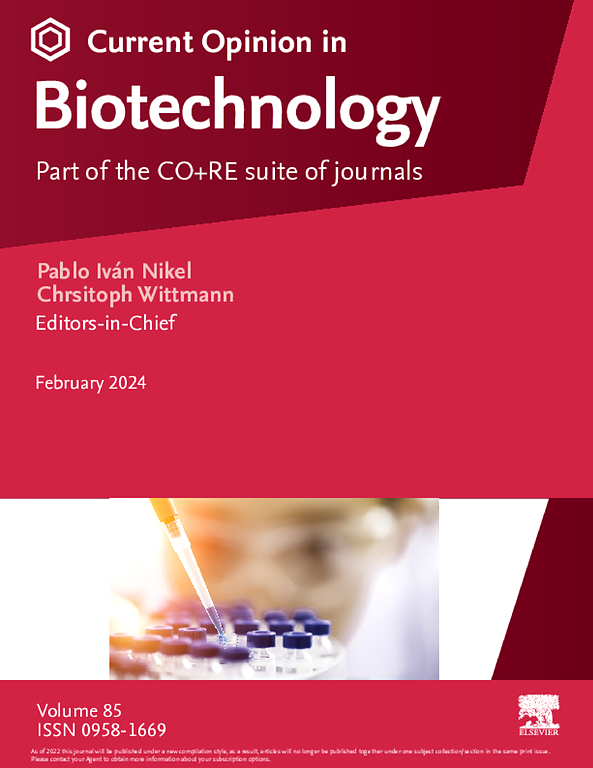Pathways to sustainability: a quantitative comparison of aerobic and anaerobic C1 bioconversion routes
IF 7.1
2区 工程技术
Q1 BIOCHEMICAL RESEARCH METHODS
引用次数: 0
Abstract
One-carbon (C1) substrates are attractive feedstocks for biological upgrading as part of a circular, carbon-negative bioeconomy. Nature has evolved a diverse set of C1-trophs that use a variety of pathways. Additionally, intensive effort has recently been invested in developing synthetic C1 assimilation pathways. This complicated landscape presents the question: “What pathways should be used to produce what products from what C1 substrates?” To guide the selection, we calculate and compare maximal theoretical yields for a range of bioproducts from different C1 feedstocks and pathways. The results highlight emerging opportunities to apply metabolic engineering to specific C1 pathways to improve pathway performance. Since the C1 landscape is dynamic, with new discoveries in the biochemistry of native pathways and new synthetic alternatives rapidly emerging, we present detailed procedures for these yield calculations to enable others to easily adapt them to additional scenarios as a foundation for establishing industrially relevant production strains.
可持续性途径:好氧和厌氧C1生物转化途径的定量比较
作为循环负碳生物经济的一部分,单碳(C1)底物是生物升级的有吸引力的原料。自然界已经进化出多种多样的c1 -营养体,它们使用多种途径。此外,最近在开发合成C1同化途径方面投入了大量的努力。这个复杂的景观提出了一个问题:“应该使用什么途径从什么C1底物产生什么产物?”为了指导选择,我们计算并比较了来自不同C1原料和途径的一系列生物产品的最大理论产量。结果强调了将代谢工程应用于特定C1通路以改善通路性能的新机会。由于C1景观是动态的,随着天然途径的生物化学新发现和新的合成替代品的迅速出现,我们提出了这些产量计算的详细程序,使其他人能够轻松地将其适应其他情景,作为建立工业相关生产菌株的基础。
本文章由计算机程序翻译,如有差异,请以英文原文为准。
求助全文
约1分钟内获得全文
求助全文
来源期刊

Current opinion in biotechnology
工程技术-生化研究方法
CiteScore
16.20
自引率
2.60%
发文量
226
审稿时长
4-8 weeks
期刊介绍:
Current Opinion in Biotechnology (COBIOT) is renowned for publishing authoritative, comprehensive, and systematic reviews. By offering clear and readable syntheses of current advances in biotechnology, COBIOT assists specialists in staying updated on the latest developments in the field. Expert authors annotate the most noteworthy papers from the vast array of information available today, providing readers with valuable insights and saving them time.
As part of the Current Opinion and Research (CO+RE) suite of journals, COBIOT is accompanied by the open-access primary research journal, Current Research in Biotechnology (CRBIOT). Leveraging the editorial excellence, high impact, and global reach of the Current Opinion legacy, CO+RE journals ensure they are widely read resources integral to scientists' workflows.
COBIOT is organized into themed sections, each reviewed once a year. These themes cover various areas of biotechnology, including analytical biotechnology, plant biotechnology, food biotechnology, energy biotechnology, environmental biotechnology, systems biology, nanobiotechnology, tissue, cell, and pathway engineering, chemical biotechnology, and pharmaceutical biotechnology.
 求助内容:
求助内容: 应助结果提醒方式:
应助结果提醒方式:


